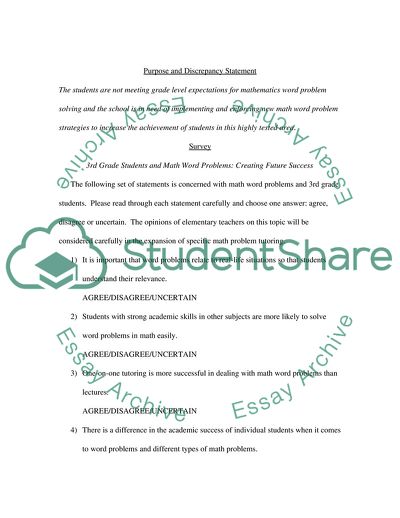Cite this document
(Improving the Success Rate of Third Grade Students in Solving Math Wo Assignment - 1, n.d.)
Improving the Success Rate of Third Grade Students in Solving Math Wo Assignment - 1. https://studentshare.org/psychology/1711854-improving-the-success-rate-of-third-grade-students-in-solving-math-word-problems
Improving the Success Rate of Third Grade Students in Solving Math Wo Assignment - 1. https://studentshare.org/psychology/1711854-improving-the-success-rate-of-third-grade-students-in-solving-math-word-problems
(Improving the Success Rate of Third Grade Students in Solving Math Wo Assignment - 1)
Improving the Success Rate of Third Grade Students in Solving Math Wo Assignment - 1. https://studentshare.org/psychology/1711854-improving-the-success-rate-of-third-grade-students-in-solving-math-word-problems.
Improving the Success Rate of Third Grade Students in Solving Math Wo Assignment - 1. https://studentshare.org/psychology/1711854-improving-the-success-rate-of-third-grade-students-in-solving-math-word-problems.
“Improving the Success Rate of Third Grade Students in Solving Math Wo Assignment - 1”. https://studentshare.org/psychology/1711854-improving-the-success-rate-of-third-grade-students-in-solving-math-word-problems.


